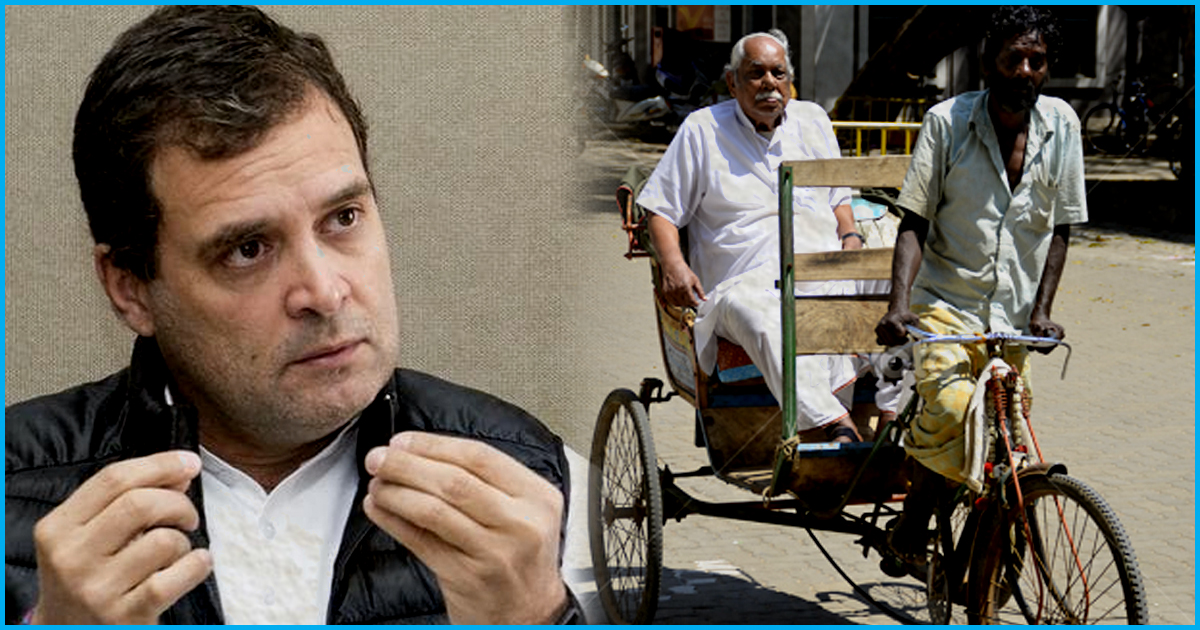
Minimum Income For Poor: Know Where It Has Been Applied & Whether It Has Been Successful Or Not
As 2019 election is approaching, the idea of Universal Basic Income has assumed a significant focus in Indian Politics. While NDA Government in 2019 budget has given the provision of Rs 6,000 per year assured income for small and marginal farmers, Opposition leader Rahul Gandhi also promised during his speech on 28 January in “Kisaan Abhaar Sammelan” in Chhattisgarh that every poor will be given minimum income. He said, “The Congress has decided to take a historic decision…The Congress-led government is going to give a minimum income guarantee. This means every poor person in India will have a minimum income. This means there will be no hungry, poor people in India (any longer).”
We cannot build a new India while millions of our brothers & sisters suffer the scourge of poverty.
If voted to power in 2019, the Congress is committed to a Minimum Income Guarantee for every poor person, to help eradicate poverty & hunger.
This is our vision & our promise.
— Rahul Gandhi (@RahulGandhi) January 28, 2019
Though Universal Basic Income(UBI) promises an income to everyone, Minimum wage program announced by Rahul Gandhi promises a minimum amount for poor.
As the buzz is around the issue, it is important to understand if this initiative has been applied anywhere in past and if yes, then if it has been successful or not. The Logical Indian briefly examines the global and national experiments with the idea of basic income and try to decipher its utility and feasibility.
Guaranteed income has been successful in Alaska
One of the oldest examples of a UBI pilot is the guaranteed income program in Alaska, US. Since its implementation in 1982, all official residents of Alaska(currently around 650,000 people) have received a uniform dividend every year, out of revenue earned from oil mining. Surveys show that 72% of residents save their dividend for emergencies and 81% say that the program improves their quality of life.
Other pilots have shown mixed results
A ‘mincome’ experiment conducted in Manitoba, Canada showed that recipients reported a significant reduction in hospitalization, specifically in case of mental health diagnoses. In another case, an accidental basic income pilot in North Carolina revealed that children in recipient families had fewer behavioural disorders and were less likely to drift into crime. Not all the results are as promising. The impact of a two-year basic income experiment in Otjivero, Namibia remains unclear due to methodological shortcomings. Similarly, despite reported positive outcomes, the pilot study in Quatinga Velho, Brazil has been criticized for its unrealistically small payments.
Many more pilots are in the offing
Several basic income pilots have been launched around the world and are currently in different stages of implementation. The Finnish experiment, which began in 2017 and is expected to continue for two years, has received considerable attention but is too limited in both scale and duration to be a true basic income project. Another noteworthy project is being undertaken in 120 villages of Kenya. Dubbed the world’s largest basic income pilot, it began in 2017 and will involve studying 16000 people for 12 years. Basic income trials are also underway in Oakland in the USA, Utrecht in the Netherlands, Livorno in Italy, Ontario in Canada, and Fife and Glasgow in Scotland. If successful, these pilots can be used to demonstrate the efficacy of UBI as a policy measure. But their failure would also have profound effects.
UBI in India
One of the first advocates of a basic income for India was economist Pranab Bardhan. He argued, in 2014, that a basic monthly income for all citizens, replacing inefficient subsidies is better targeted towards poverty alleviation. The UBI debate in India gathered steam after its inclusion in the Economic Survey 2016-17, championed by then Chief Economic Advisor Arvind Subramanian. The Survey flags UBI as a conceptually appealing idea and a possible alternative to social welfare programmes.
The SEWA pilot study in Madhya Pradesh transformed lives
In 2014, a basic income pilot was conducted in India by the Self-Employed Women’s Association (SEWA), in which about 6000 people in 8 villages of Madhya Pradesh received a small basic income for 18 months. Many transformative effects were observed: first, there were benefits to welfare – improved nutrition, better health, improved schooling; second, there were positive equity effects – the basic income helped the disabled, the women and the scheduled caste households more; third, there were positive economic effects – more labour participation, raised productivity and output, and growth in secondary, self-employed work. The results dispelled doubts such as whether the poor recipients would spend their money irresponsibly, for instance, to buy alcohol and whether access to free income would make them lazy and disinclined to work. Such apprehensions often expressed as ‘do not just give them fish’ were proved groundless.
Implementing UBI in India may be prohibitively expensive
Given the widespread on-principle support for the policy and positive pilot results, one wonders why a UBI has not been implemented in India. The main hurdle to extensive adoption of a UBI is that it is expensive. The Economic Survey 2016-17 uses the Tendulkar Committee’s poverty line(valued lower than other lines) to calculate the basic income as Rs 7620 per year. Going by these figures, the Survey estimates that there would not be enough resources for implementation of a truly universal, basic income and instead recommends a quasi-universality rate of 75% of the population, which could be funded by an amount equivalent to 4.9% of the country’s GDP.
About the author: Abhishek Ranjan is a Research & Policy Analyst at Office of MP Ninong Ering, former LAMP Fellow, & Shruti Sundar Ray is a Researcher
Also Read: Finland Announces Universal Basic Income. Unemployed To Be Payed Rs 40,000 A Month
 All section
All section













